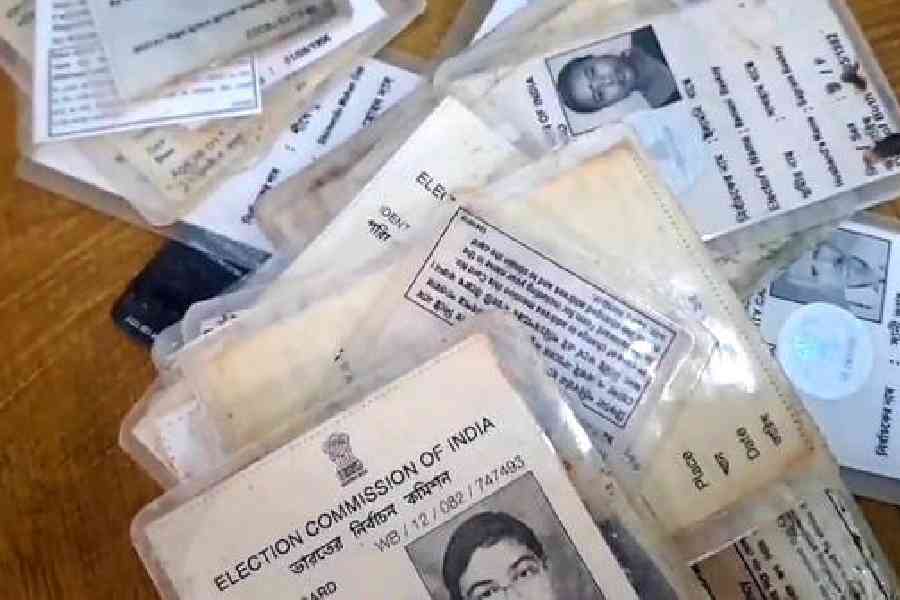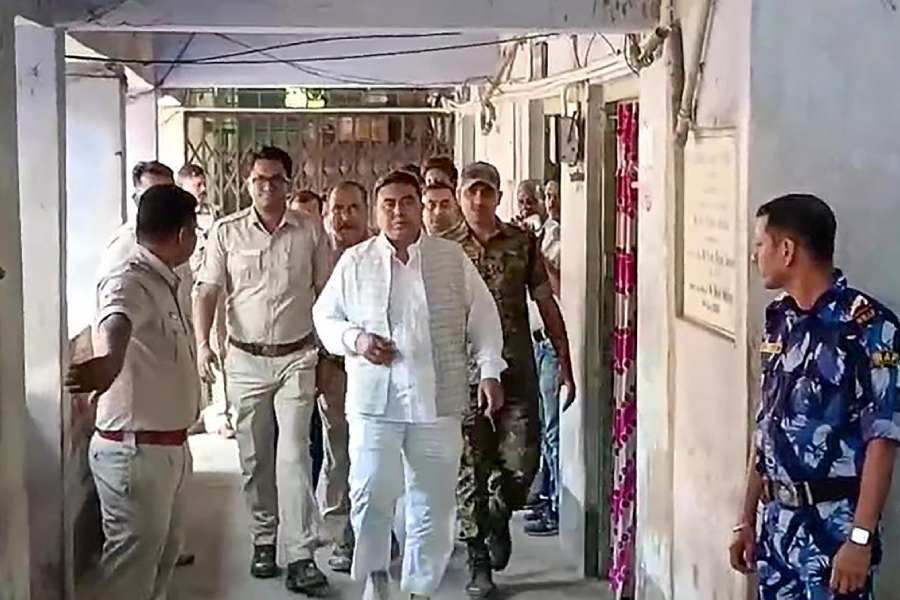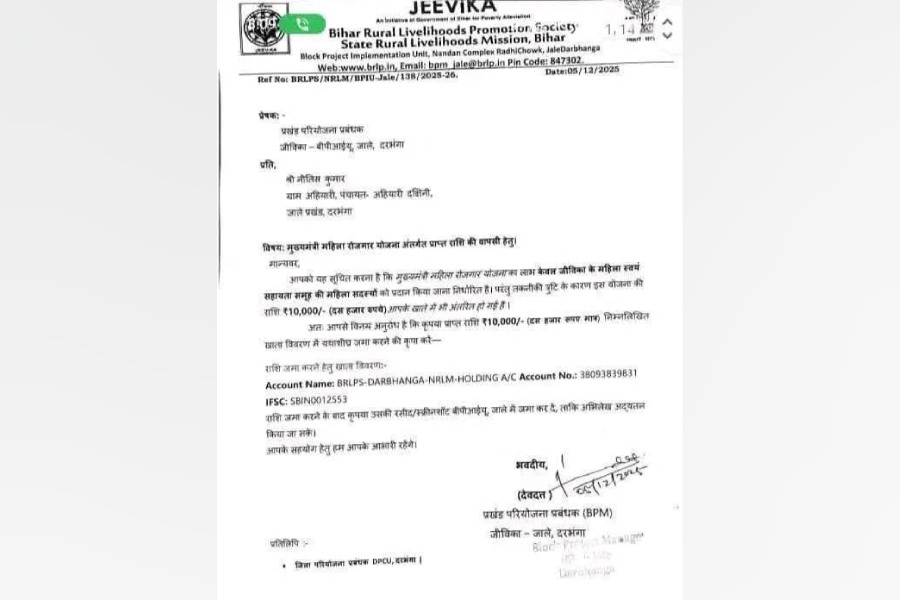Starring Nawazuddin Siddiqui, Bhumi Pednekar, Sharib Hashmi and Sumeet Vyas, Sudhir Mishra’s Afwaah is satire in broad strokes. There is no such duality at play in Sudipto Sen’s The Kerala Story – it is as establishment-pleasing as it can get. This is a product of the WhatsApp school of filmmaking, which takes every thesis propagated by the school as gospel truth and regurgitates it as film.
There’s a Hindu, a naive college-going Keralite, Shruti Unnikrishnan, whose Muslim hostel roommate introduces her to her Muslim cousins. She, like all girls of her age, likes to visit malls and restaurants. On one such visit to a mall, she and her friends (all ‘un-Islamic’, dressed as they are in shorts and Western dresses) are attacked by goons. She is told that those in hijab never get molested or raped, and presto, the conversion is complete, to the extent that Shruti indicts her father for following a foreign ideology like communism and having never taught her about religion. There is also gratuitous rape of the now-pregnant convert by her paramour who insists that this is what women are meant for – the implication is there for all to see: this is how ‘they’ treat innocent women. (Let’s not even mention Bilkis Bano here, which by the way was true.)
Every conceivable bigoted, fear-misinformation-and-rumour-mongering social media post and viral video forms the ‘factual’ basis of this sham of a film. If The Kerala Story is a product of our times, Afwaah is an exposé of that. And we know which side is winning.
The Lessons
The problem with The Kerala Story is not that it is propaganda. Not even that the might of the state was put behind it. Propaganda can make for brilliant cinema. And state power has always used cinema and art as tools of propaganda. After all, what is Battleship Potemkin (directed by Sergei Eisenstein) but ‘a masterful propaganda [that] created the founding myth of communism as an idea that changes the face of an unjust reality’? It was also, and remains, a veritable lesson in the craft and techniques of cinema. The films of Leni Riefenstahl too – for all her Nazi sympathies, there is no denying the artistic heights of, say, Triumph of the Will, even as the propaganda behind it makes one uncomfortable.
The problem with The Kerala Story is that it is a bad film. A bad film that propagates every imaginable falsehood to demonise the ‘other’. The problem with The Kerala Story is the response it calculates it will garner and the unerring way it manages to do that. In the show I watched, the row in front of me was taken by 15 women, who seemed like students of a polytechnic. The slogans they raised, the invective they hurled at the ‘enemy’ with each sequence was nauseating. If I belonged to the ‘other’ religion, I would feel not only humiliated but frightened out of my wits. I felt offended at what I witnessed and heard.
And the problem with The Kerala Story lies in the way it grew in the number of theatres even as Afwaah fell by the wayside. Sudhir Mishra was prophetic about the ‘liberals’ who pontificate on these issues not coming out to watch the film. I watched Afwaah on the third day after its release, a Sunday, with an audience of barely ten people. I watched The Kerala Story on a weekday in the second week, and there was half a hall full. Even as I write, Afwaah has gone out of all theatres – to begin with, in Delhi/NCR it had barely five shows, all late in the night – while the number of shows for The Kerala Story has only grown. The problem lies in the fact that there are today more people patronising a rumour masquerading as a film than a film that addresses that rumour.
The problem with The Kerala Story and its many manifestations that have gone before (The Kashmir Files, The Accidental Prime Minister, Indu Sarkar) lies in the fact that there is no answer to the question: how do you fight such misinformation? How do you engage with such propagandists? Sudhir Mishra, Hansal Mehta and Anurag Kashyap have argued against the ban as a tool. Any individual in their right mind will concur.
But today, if these filmmakers were to make a film that is as stridently anti-establishment as The Kashmir Files and The Kerala Story disseminate falsehood, do you think those in the establishment will extend the same courtesy to their film? Would Hansal Mehta have been allowed to get away with Faraaz if he had turned the gaze on a similar incident in India involving the majoritarian religion? (Faraaz is of course the director’s clever sleight of hand to make a comment on where we stand as a society in the guise of a real story unfolding in a neighbouring state.)
Sudhir Mishra has even argued for engagement and conversation. And the podcast conversation with Vivek Agnihotri leading up to the two films was quite a Twitter sensation. Many of my ‘literary’ friends make the same argument: if we do not engage and talk, we leave the field open to those who propagate such views. But this engagement comes at a cost. I have seen platforms and panels for discussion being blatantly hijacked and misused.
Is it possible to engage with someone who is closed to the possibility of your side of the story having any foundational value? How do you deal with the insidious way such rumour mongering has entered the school curriculum? This morning, even as I was putting the final touches to this article, I came across a petition made to the education minister of the AAP government about private schools in Delhi organising screenings of The Kerala Story, booking theatres en masse for the purpose. This is a film that has received an ‘A’ certificate. How does one address the blatant disregard for the law and the frightening scenario this presents in influencing young minds?
In the end, there has never been any doubt from the outset which of the two films would sweep the box office. However, for me Afwaah, warts and all, remains a wonderful achievement, a brave and important work at a time of great despair. It reminded me of the last line of Sudhir Mishra’s debut, Yeh Woh Manzil Toh Nahin: ‘Koshish toh ki.’ (At least we tried.) We can always try.
(This is the second part of a two-part article)
Shantanu Ray Chaudhuri is a film and music buff, editor, publisher, film critic and writer. The views expressed in this article are those of the author’s.










